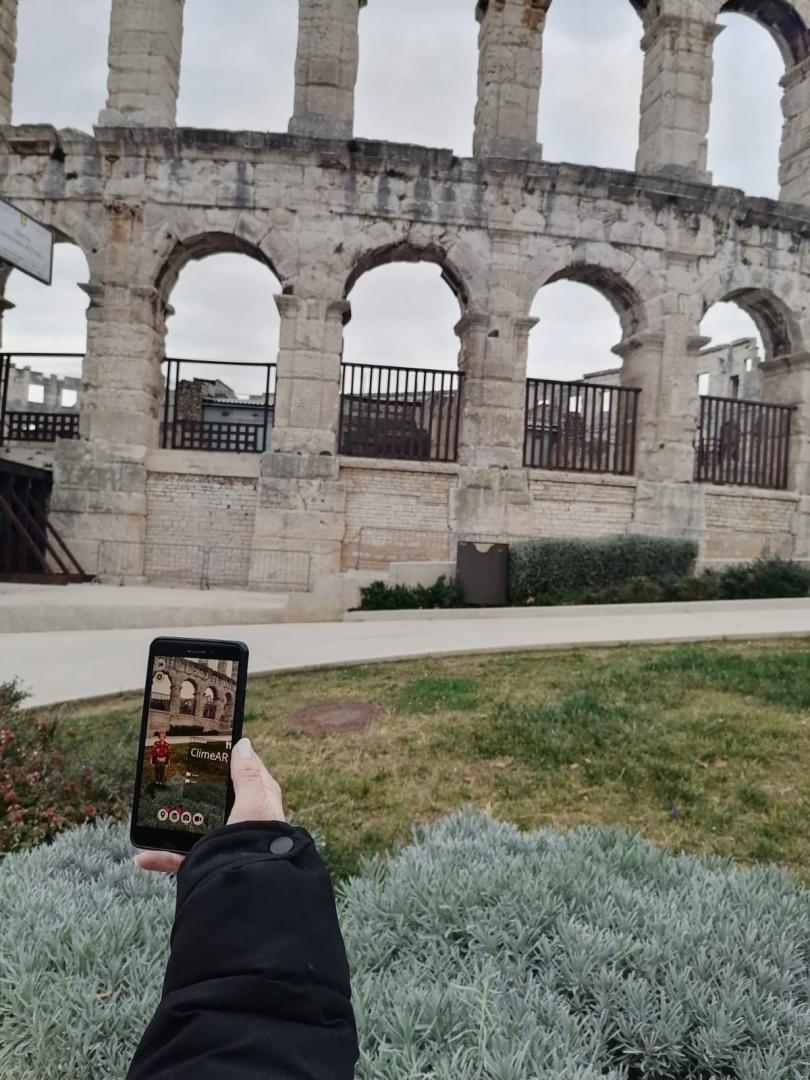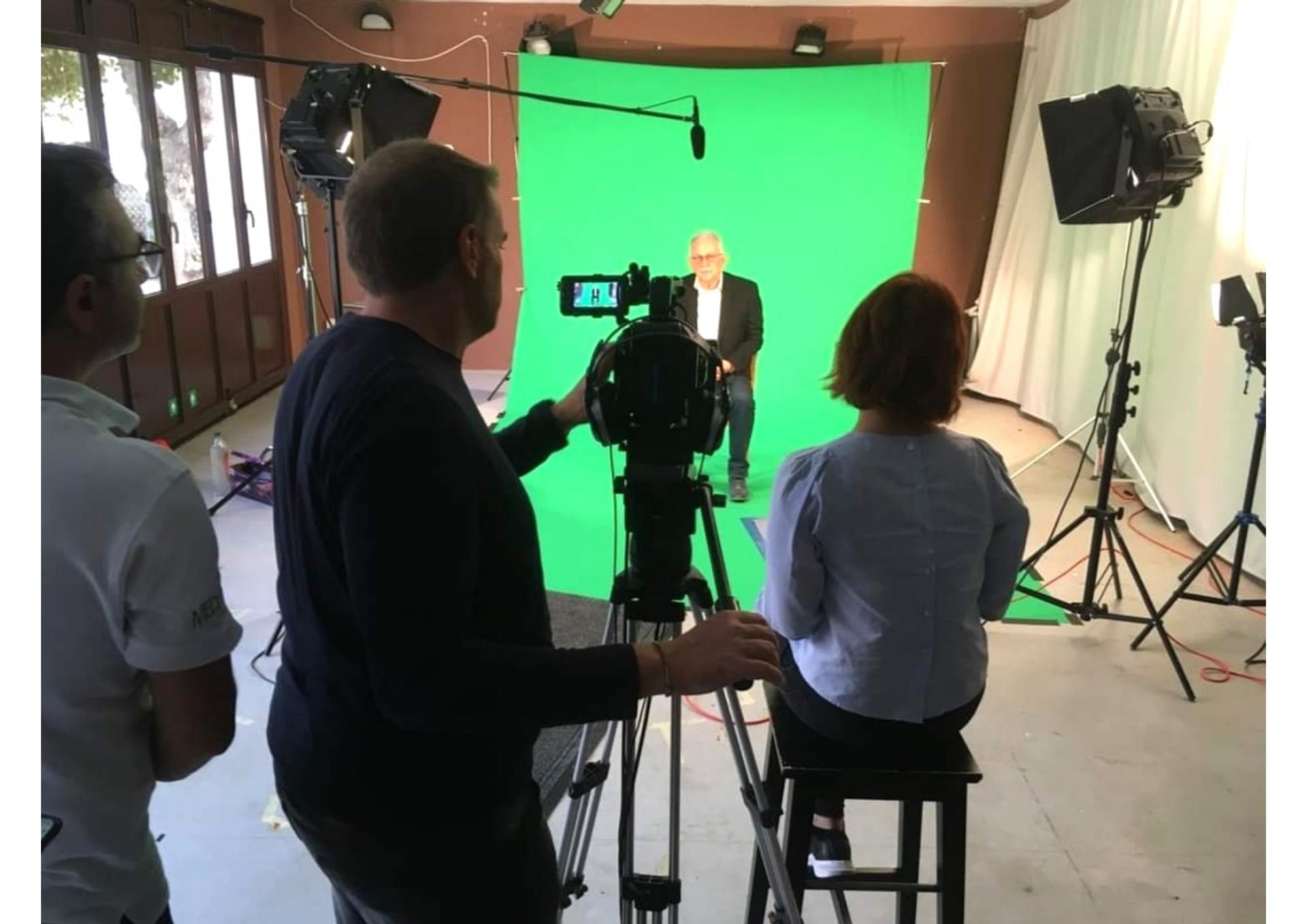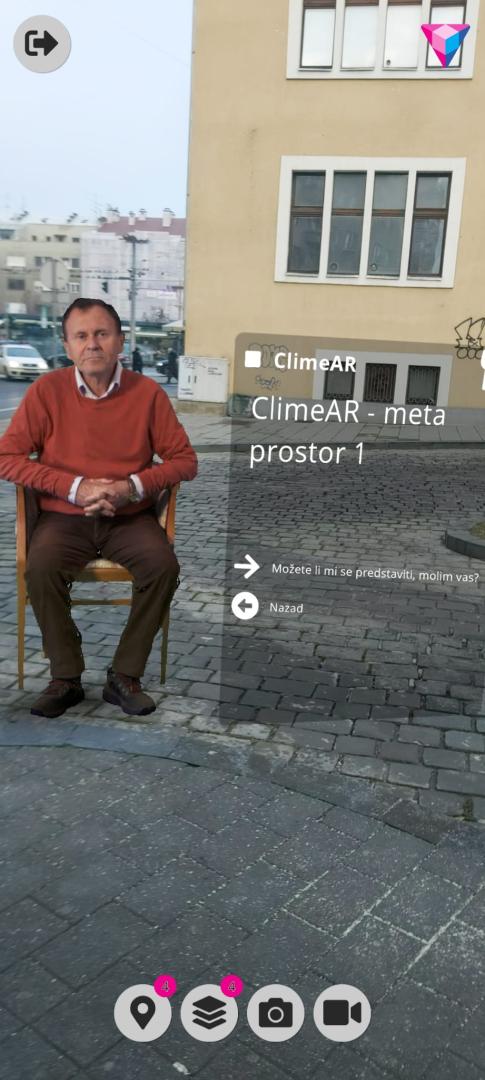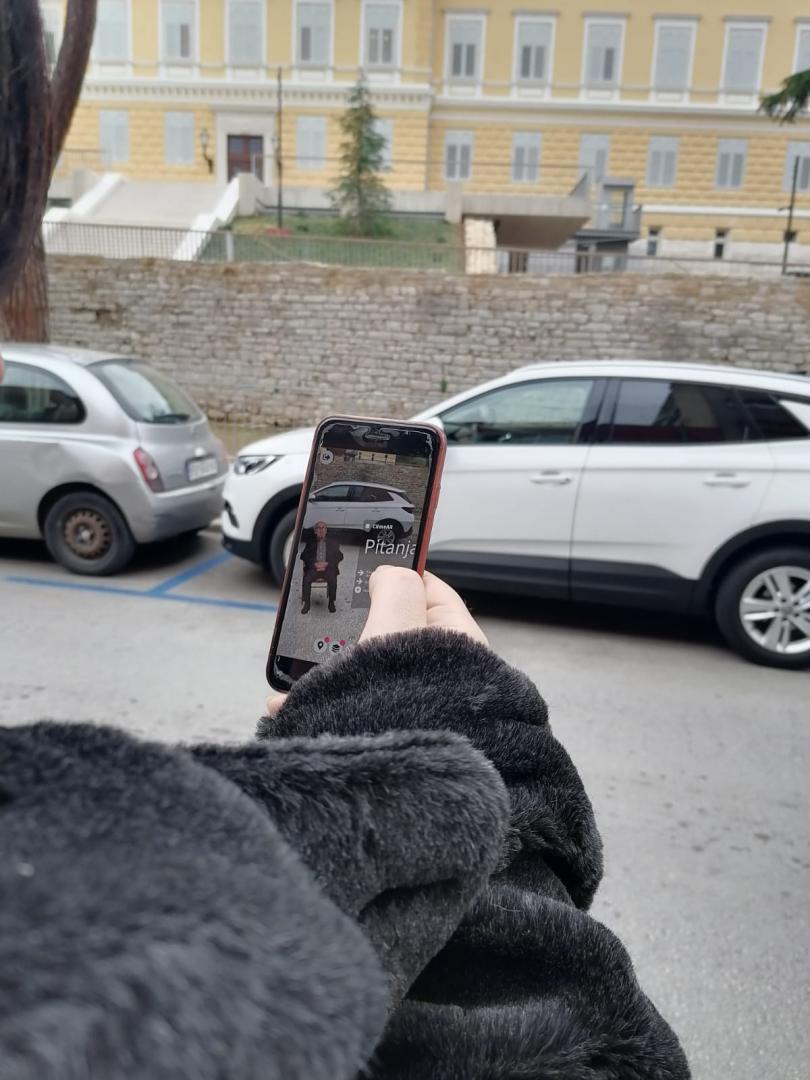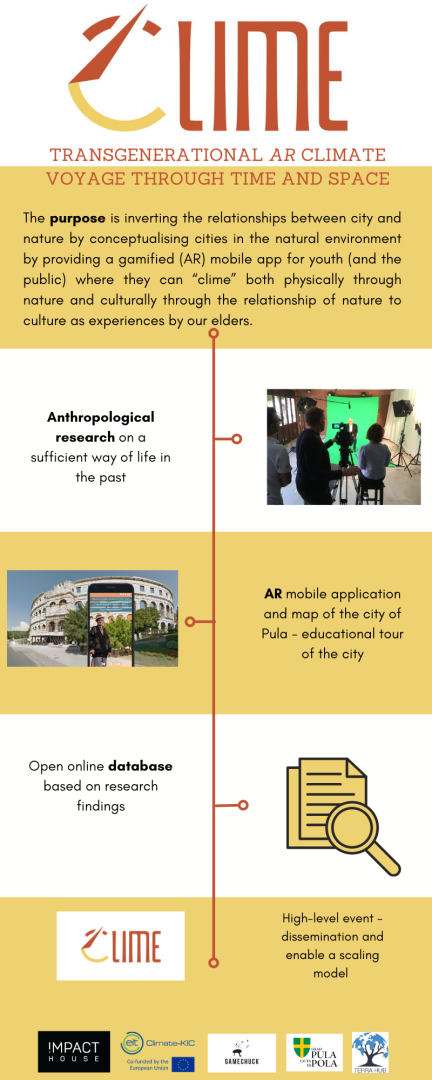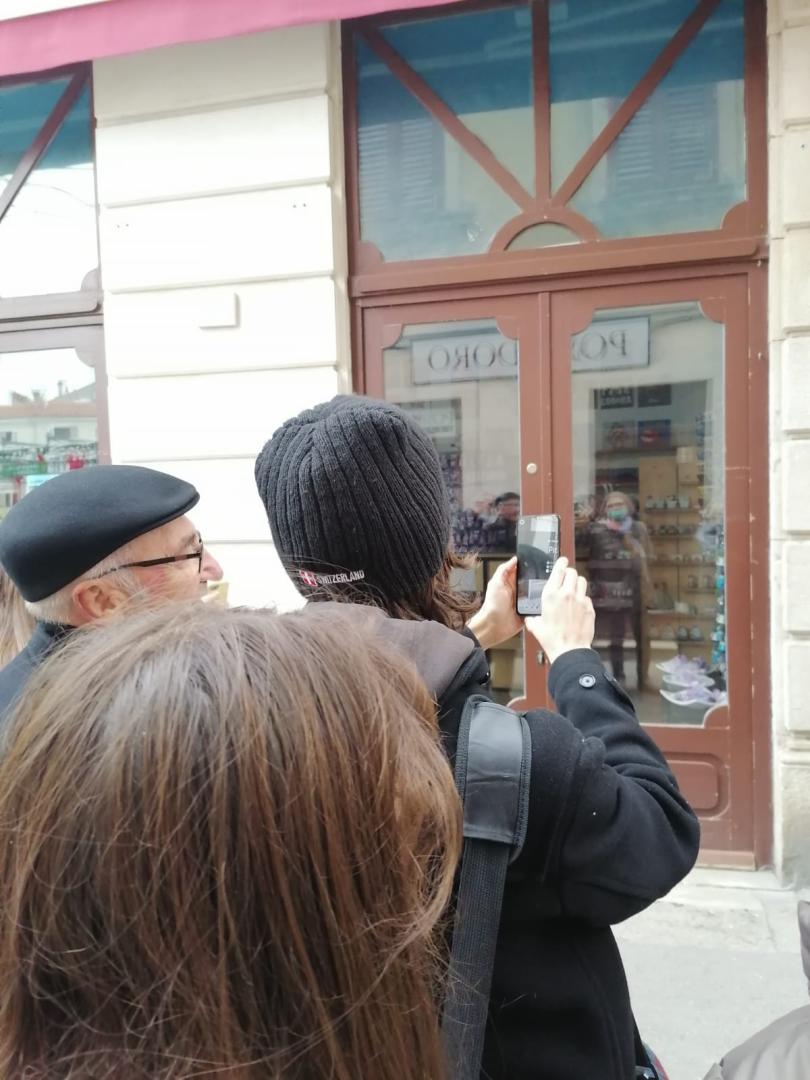CLIME - climate stories from the past
Basic information
Project Title
Full project title
Category
Project Description
Twenty insights of the oldest citizens of Pula of how life is changing due to climate change & over 100 interactive dialogues compiled into augmented reality app, enables you to ask questions and get answers in real-time while walking around the ancient city. You never have to walk alone again. Play a game with grannies and they will guide you, tell stories of life, inspire you to change for the better. ClimeAR is a transgenerational climate voyage through time and space you want to take!
Geographical Scope
Project Region
Urban or rural issues
Physical or other transformations
EU Programme or fund
Which funds
Description of the project
Summary
The CLIME brings together narratives about climate change and the way of living in Pula several decades ago. In modern society, there is accelerated climate change, unfavourable conditions and negative factors that affect the preservation of heritage and nature. While we perceive our cultural heritage as precious and connected to the community, climate and climate change fall victim to the diffusion of responsibility. Therefore by connecting the two, by showing the effects climate has on our way of living in a lifetime of one person, we can make significant shifts in the way people relate to climate change as well as different generations in a given society.
The main goal of the project “Clime” was to connect generations in a common goal of tackling climate change by using AR technology to share an experience that stretches over the lifetime of elderly citizens and benefiting from their strategies of living in rapid climate change The project focused on negotiating the relationship between the city (culture of living) and nature in light of accumulated trans-generational experience and through ancestry/legacy terms.
The main project activities were:
- anthropological research in Pula (a semi-structured interview with 12 elders),
- analysis and adaptation of materials into AR technology (transfer to AR platform Equinox XR),
- dissemination webinar and high-level event in Pula (testing the application on students and locals of different age groups)
- and, as final products - mobile AR app and open scientific database
Key objectives for sustainability
The key objectives were:
- Reviving ‘Councils of Elders’ connection with Youth - through interviews, we collected stories from the past told by the elderly, which involved the elderly in creating public space and enabled them to transfer knowledge and their experience.
- Archiving and researching collective memory of climate change and the way it affects lives, architecture, food, work, travel, tourism, waste, and using resources.
- Strategic use of Heritage and Culture for planning and restoring connection in public space - the elderly lead us through the city and surrounding area and talk about his/her life experience. According to their stories, a tour of the city and surroundings has been made (tour as strategic use of heritage and culture through re-design of public space).
- Using new technologies (AR) to connect generations, spaces, heritage, nature and narratives - use of AR technology for city mapping and multiple interactions for environmental and sustainability education purposes.
- Generating intergenerational climate awareness/understanding.
- Reviving the historic city and anthropological space of the Mediterranean.
- Generating educational content on sufficiency and life in accordance with the rules of nature.
- Fostering and supporting sustainable, responsible tourism and context, heritage and impact awareness
Key objectives for aesthetics and quality
With this project, our goal was to encourage intergenerational interaction and encourage transgenerational knowledge transfer in the creation of public space. Thus, the public space of Pula was created in a different - innovative way - through AR technology. Anthropological research and analysis of the culture of living have identified climate change and adaptation to life over 90 years. We have learned that the solution lies in connecting generations and generating public dialogue on important topics and social problems. The impact of our project is just beginning, as we have faced the challenge of time constraints and deadlines by which project activities should be submitted. Realising that change is necessary and urgent when it comes to climate and way of life, as well as that there are fewer and fewer multigenerational households, we use AR to recreate generational gaps and learn about change from our elders thus making change more familiar and possible.
Key objectives for inclusion
The main goal is connecting generations in a common goal of tackling climate change with the purpose of inverting the relationships between the city and nature. This innovation aimed to generate civic participation in shaping public space and encourage inclusion versus the generation gap. We are aware that we live in a society where communication is limited and the generation gap is widening, especially between grandparents and the youngest. It was this project that included these two target groups: the elderly and the young. In this way, the elderly were able to transfer their knowledge and experience from the past: how they once lived according to natural resources, and young people from their stories can learn sustainable life forms, learn about their city's past, culture, behaviour in public space and nature. In addition, the social impact of this project reaches a heterogeneous target group:
- makes the elderly visible and contributes to transgenerational and intergenerational knowledge transfer, by using unique technology and sociological research
- strengthens intergenerational interaction and reduces the generation gap,
- raises awareness of climate change,
- puts climate change and sustainable life awareness within the tourist offer of the city and beyond,
- redesigns the public space of the city of Pula,
- educational program for locals and tourists,
- provides a business model game app and changes in environmental behaviour in other cities
- reconnects us on an emotional level with the space we use thus impacting our motivation on preserving and protecting it.
Results in relation to category
We conducted research and created and tested an app as well as held dissemination events in only three months' time thus showing the great strength and dedication our team and consortium has,. During the testing period we have had three different organisations (public, private, it) show interest in reporducing/using/selling our app thus confirming the market value (confirming we have generated MVP - minimum viable product) and we are currently continuing work on a social enterprise business model for the app in order to keep it going, scale it and generate funds for the elderly of the city where the product is used.
We identified short-term and long-term impacts.
Short term impacts:
- Increasing knowledge of past lifestyles and sustainability without plastic. Lessons learned about urban living and adapting to nature
- An increasing level of participation of the Council of the Elderly in the creation of public space
- Generating new ideas and providing new spaces for discussion and input.
- Increasing knowledge in the area of climate change and ecological attitudes.
- Making elderly voices (in climate) heard - reduction of the generation gap. Elderly participants told their stories and gave advice to younger generations on how to live by the rules of nature.
- Involvement of other cities and scientists - dissemination and creation of a public research database.
Long term impacts:
- Empowering youth and elderly - encouraging all generations to interact - transgenerational action towards sustainability and knowledge transfer with the aim of maintaining nature
- Changing the way the touristic view of the city is perceived and created - re-designing public space. Through the AR mobile application, a different view of the city and storytelling was created (enabling and supporting socially responsible tourism).
- Making elders heard: in addition to the generated video materials with their stories, the plan is to create a public forum open for discussion so that all
How Citizens benefit
Citizens were the focus of the project. The final product is based on their stories, experience in knowledge. So, they are the main protagonists, they are the subject who tells the story. Elderly citizens of the city of Pula participated in anthropological research (semi-structured interview on the topic of culture lived decades ago in accordance with natural resources). A video recording of a semi-structured interview among 12 elderly citizens of Pula was conducted for 3 days. After conducting a conversation with the citizens, we transferred their stories to the AR mobile app. In addition, the local population (youth and elders) first tested this innovation and the final product in Pula was based on the AR mobile application. Students, young cyclists and elders tested our two tours. So citizen involvement is fully in focus. In addition, the project partner is Terra Hub, an organization in civil society, as an expert in the field of climate sustainability. The elders that gave their stories at the beginning of the project are still involved and we pay extra attention on continuous involvement with the local community and our stakeholders, we are discussing with them a business model that would generate funds for the elderly of the city where the app is created/used.
Physical or other transformations
Innovative character
This is a social innovation that responds to the needs of the local community - especially the elderly who are an excluded social group in order to encourage transgenerational interaction through new technologies - AR platform and mobile application. In addition, this is a technological innovation in such a way that for the first time a modification of real characters in the AR (augmented reality) world was tested, and not 3D characters that could be found in games and AR or VR world so far. Also, this project is innovative because it has a very rare approach to research the relationship of humans and climate through a lifetime as it changes, in addition by taking a basically longitudinal approach it detects and discusses how our habits such as eating, cooking, working, buying food, using public space etc changes with climate change though 60-90 years.
Learning transferred to other parties
This innovation is fully scalable and applicable in another context. Research on the culture of living and the experience of our elders on the basis of which we monitor climate change and changes in life habits can be conducted in any locality and culture. Methodologically speaking, it is necessary to analyze and research the site, find out about the specifics of the climate, heritage and way of life, and voluntarily gather the elderly population (aged 65 to 95) for interviews. The protocol of the interview is created on the basis of previously researched specifics of the locality and the life of the local community. What our project has generated - a database of research findings - is in open data/open knowledge format so it is open and free to the public for the purpose of comparative research in the future. More precisely, to create a more extensive database that will provide us with research findings from different cities around the world on the same topic. In this way, we could compare changes on a global level and adopt habits with the purpose of sustainability. The mobile application itself is technologically applicable in other contexts. The mobile application itself is technologically applicable in other contexts and as mentioned we have already in three short months had expressions of interest to grow and adapt the project to new contexts.

